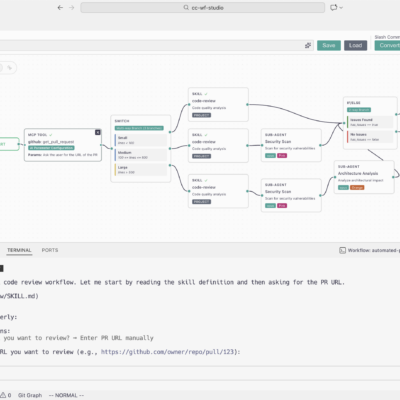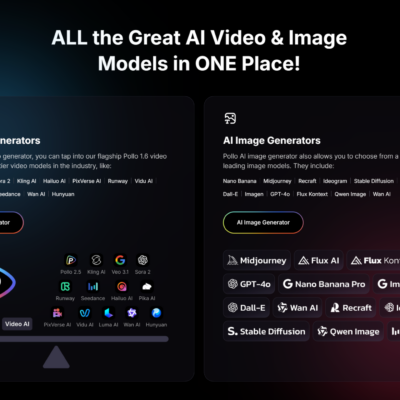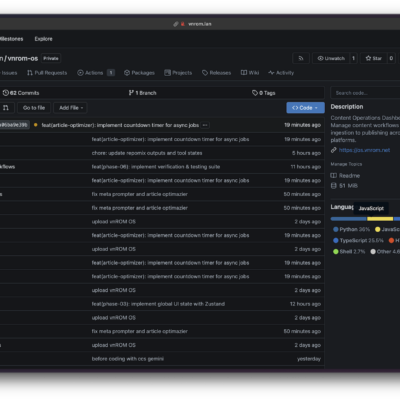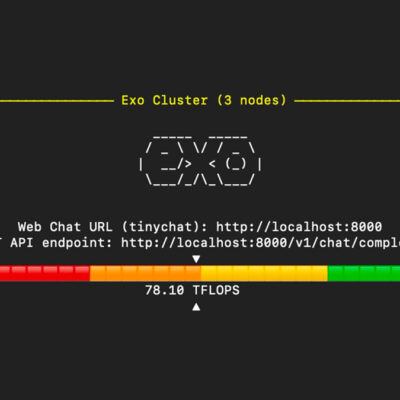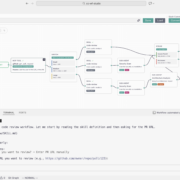In the world of automation, n8n stands out as an incredibly powerful tool, enabling users to connect disparate applications and automate complex workflows with remarkable ease. But unlocking its full potential often comes down to understanding which integrations to leverage and how to use its built-in functionalities effectively. As someone deeply invested in building robust automations, I’ve seen firsthand how a well-chosen integration or a smartly deployed node can transform a business process.
This article dives into the most impactful external applications and indispensable built-in nodes within n8n. Whether you’re looking to streamline data management, deploy advanced AI, or orchestrate intricate multi-step automations, you’re likely to discover some tools you might be overlooking. Let’s explore how you can elevate your n8n game.
Unlocking Automation with Top External n8n Integrations
When it comes to extending n8n’s capabilities, integrating with external applications is where much of the magic happens. These connections allow your workflows to interact with the broader digital ecosystem, pulling in data, triggering actions, and disseminating information across your entire tech stack.
AirTable: Your Flexible Data Hub
AirTable serves as an exceptionally versatile database and information management tool, often acting as a central repository for various data types. What makes it so popular in n8n workflows is its flexibility in storing and organizing information.
- Content Production Machine: I frequently use AirTable to manage content creation pipelines. Imagine a scenario where all your creative ideas, video topics, and related details (format, urgency, inspiration links) are automatically added to an AirTable base from a web form or even a web scraper. This structured approach simplifies content planning significantly.
- Transforming into Web Applications: One of AirTable’s coolest features, especially when combined with n8n, is its ability to serve as the backend for a full-blown web application. You can trigger n8n workflows based on changes or selections within AirTable. For instance, checking an “Email Sent” checkbox in AirTable could initiate a workflow to send a personalized email, notify your team in Slack, create a project task in ClickUp, or upload files to Google Drive. This level of dynamic interaction is a game-changer for many business processes.
Leveraging Advanced AI with Anthropic and Gemini
The integration of Large Language Models (LLMs) into n8n workflows has revolutionized what’s possible, and Anthropic and Gemini are leading the charge.
- Anthropic’s “Enabled Thinking”: Anthropic, a highly regarded LLM, offers a unique “enabled thinking” feature. This allows the AI to slow down and process information more thoroughly before responding, similar to how a human might deliberate on a complex problem. For tasks requiring meticulous reasoning or tool calls, this feature ensures more accurate and contextually relevant outputs, making it ideal for intricate queries.
- Gemini: The Multi-Modal AI Powerhouse: Gemini stands out for its multi-modal capabilities. Beyond text, it can process and generate content from documents, audio files, images, and, notably, videos.
- Video Analysis: Currently, Gemini is unique in n8n for its ability to analyze video content. Imagine feeding a video into Gemini and asking for a summary, key themes, or even suggestions for improvement. This opens up entirely new use cases for content creators, marketers, and researchers who need insights from visual media.
- Image Generation: Like other advanced LLMs, Gemini can also generate images from prompts, allowing for dynamic visual content creation within your automated workflows.
Streamlining Communication: Telegram & Slack
Messaging platforms are vital for team communication and client interaction, and integrating them with n8n transforms them into powerful automation endpoints.
- Telegram: Your AI Agent’s Easiest Link: For integrating AI agents, Telegram is often the most straightforward messaging platform outside of n8n’s native chat. Its ability to process both audio and text messages makes it incredibly versatile. You can send an audio query to an AI agent, have n8n transcribe it, process the text with an LLM, and send a text response back, all automatically.
- Slack: Internal AI for Team Efficiency: Slack is invaluable for internal team communications. By connecting it to n8n, you can set up AI agents that act as a first line of defense for common questions. Instead of your team asking a manager, they can query a Slack bot for answers, access information from a knowledge base, or even trigger specific internal workflows.
Harnessing OpenAI’s ChatGPT in n8n
ChatGPT, another prominent LLM, brings a wealth of generative and analytical capabilities to your n8n workflows.
- Image Generation and Analysis: Similar to Gemini, ChatGPT can generate images from descriptive prompts, offering another avenue for creating dynamic visual assets. More importantly, it can analyze images you feed it, providing descriptions or helping generate captions based on the visual content. This is incredibly useful for social media automation or content creation.
- Audio Generation and Manipulation: ChatGPT can generate audio messages with impressive nuance, including variations in cadence and speed. This capability can add a human-like touch to automated voice responses or content.
- Translation and Transcription: A highly practical use case for ChatGPT in n8n is its ability to translate and transcribe audio or text. You can feed an audio file in one language and have it translated to another, or simply transcribe audio into text, streamlining content localization and accessibility efforts.
Gmail: Automating Your Inbox
For many, Gmail is the epicenter of their digital communication. Integrating it with n8n allows for unprecedented control and automation of your email management.
- Intelligent Inbox Management: I often set up workflows to automatically label or tag incoming emails based on custom criteria. This can also extend to deleting junk mail, marking e-commerce promotions as read, or even moving them out of the primary inbox.
- Automated Email Actions: Beyond organization, n8n can automatically create draft messages (though I always recommend a human review before sending important emails!) or send emails based on triggers. For business processes, think about automatically forwarding invoices to your accountant, pre-processing receipts for QuickBooks, or creating new tasks for your team based on specific email content.
Google Sheets: More Than Just Spreadsheets
Google Sheets, seemingly simple, is a powerhouse for data management and can even function as a lightweight web application backend within n8n.
- Content Management & Recruitment: I’ve built entire content production systems within Google Sheets, tracking up to 30 videos through various stages like “Idea,” “Pending Approval,” “Scheduled,” and “Published.” Checking a box in a sheet can trigger a full workflow to notify my team, create tasks in ClickUp, or organize files and folders in Google Drive. Beyond content, it’s excellent for recruitment pipelines, CRM, or any process requiring structured data.
- Web Scraping & Data Collection: You can automatically scrape data from various online platforms and feed it directly into a Google Sheet. This makes it a central repository for research, competitive analysis, or lead generation.
Expanding Horizons: HTTP Modules and Webhooks in n8n
While n8n boasts a growing list of native integrations, the reality is that the digital landscape is vast. This is where HTTP modules and webhooks come into play, offering limitless possibilities for connecting with virtually any online service.
The Power of HTTP Modules: Connecting Beyond Native Integrations
N8n, like any automation platform, has a finite number of native app integrations. Compared to thousands offered by platforms like Zapier or Make.com, n8n’s native list might seem smaller. However, this is precisely where HTTP modules shine. They allow you to integrate with any application on the internet that offers an API.
- Breaking Limitations: Essentially, many native n8n integrations (like Google Sheets, Zoom, etc.) are pre-built HTTP requests. With the HTTP module, you’re empowered to build these connections yourself. You just need to understand the basic mechanics of HTTP requests (method, URL, headers, body).
- Leveraging AI for Code: Don’t have a coding background? No problem. You can ask ChatGPT to generate the specific curl command or HTTP request structure you need. For example, to integrate with a service like Ampify for web scraping, you can consult its API documentation, copy the curl command, and import it directly into n8n’s HTTP module. This pre-fills most of the details, leaving you just to input authentication tokens, making complex integrations surprisingly accessible.
AI Agents: Your Intelligent Automation Core
AI Agents in n8n are more than just LLM integrations; they represent a holistic approach to building intelligent, task-oriented automations. They can act as virtual employees, understanding requests, using tools, and formulating responses based on context and memory.
- Retrieval Augmented Generation (RAG): A key application of AI Agents is creating a knowledge base using RAG. This transforms your company’s information (documents, FAQs, pricing details) into an intelligent database. When a customer asks “What’s your pricing?”, the AI agent can retrieve the exact answer from your curated data, providing accurate and instant support, essentially an incredibly smart FAQ system.
- Core Components of an AI Agent:
- Model (Brain): An LLM like ChatGPT or Anthropic that performs reasoning and decision-making.
- Memory: Allows the agent to remember past conversations and context, enabling follow-up questions and more natural interactions.
- Tools: The external applications and internal n8n nodes the agent can use to perform tasks (e.g., sending emails, searching databases, creating documents).
Webhooks: Initiating Workflows from External Events
Webhooks are the unsung heroes for starting n8n workflows from external applications that might not have a direct native integration. Think of a webhook as a dedicated, always-on server endpoint within your n8n instance, patiently waiting to receive data.
- Triggering Workflows: The most classic example is a form submission on your website. When a user hits “Submit,” that data can be sent via a webhook directly to n8n, instantly triggering a workflow to process the lead, send notifications, or update your CRM.
- How They Differ from HTTP Requests: While similar to HTTP requests in their underlying technology, the key distinction is their direction. Webhooks receive incoming data from third-party applications when a specific event occurs. HTTP requests send data out or pull data in from within an n8n workflow. Webhooks are perfect for reactive automations – when something happens elsewhere, start a workflow here.
Mastering n8n’s Built-in Nodes for Robust Workflows
While external integrations connect n8n to the world, its built-in nodes provide the internal logic, control, and data manipulation capabilities that make complex automations possible.
The Indispensable Click Trigger
This might seem basic, but the Click Trigger is universally popular for a reason: testing. It’s the simplest way to manually initiate a workflow, allowing you to debug and refine your automation steps without waiting for external events. It’s often the first node new users encounter and an essential tool for development.
Efficient Data Handling: Split Out, Aggregate, and Loop Over
Managing lists and collections of data is fundamental to many automations. n8n offers powerful nodes to control how you process these items.
- Split Out: When you have a list of items (e.g., three grocery items: apples, bananas, mangoes) and you need to process each one individually, the
Split Outnode is your go-to. It breaks down a single input containing multiple items into separate inputs, allowing subsequent nodes to act on each item one by one. This is ideal for adding individual records to a database or performing a unique action for each item. - Aggregate: The
Aggregatenode does the inverse ofSplit Out. After processing individual items, you might want to combine them back into a single list or report.Aggregatemerges multiple items back into a single input, perfect for generating a daily report of all leads processed that day. - Loop Over (and Rate Limiting): While
Split Outprocesses items individually, theLoop Overnode offers a crucial advantage: controlled, sequential processing with delays. If you’re pushing a large number of items to an external application (like Google Sheets), you’re often limited by “rate limits” (e.g., 300 requests per minute). Trying to send 10,000 items in two seconds would likely result in errors.Loop Overallows you to process items one by one, introducing a wait time (e.g., one second) between each item. This ensures you stay within API rate limits, preventing your workflows from breaking due to overload.
Forms and Wait Steps: Enhancing User Interaction
These nodes are critical for creating user-friendly and authentic automation experiences.
- Forms: The
Formsnode allows you to create simple web forms directly within n8n. This is perfect for collecting information like lead details (name, email, budget, service required) and immediately triggering a workflow to process that data, send internal notifications, or initiate follow-up actions. - Wait Step: To make your automations feel less robotic and more human, the
Waitstep is invaluable. Instead of sending an immediate email the instant a form is submitted, aWaitstep can introduce a delay of a few minutes. This small pause can significantly enhance the perceived authenticity of your automated communications.
Code Nodes: Custom Logic with JavaScript
For scenarios where native nodes or HTTP requests aren’t quite enough, the Code node provides a powerful escape hatch, allowing you to run custom JavaScript within your workflow.
- No Coding Background? No Problem: While it might seem intimidating, you don’t need to be a JavaScript expert. ChatGPT can generate the code you need for specific use cases. Just describe what you want to achieve, and it can provide the script.
- Practical Applications:
- Attachment Extraction: Automatically extract all attachments from incoming Gmail emails, regardless of how many there are, and upload them one by one to Google Drive.
- Data Consolidation: When scraping a LinkedIn profile, you might get a myriad of fields. A
Codenode can consolidate these disparate fields into a single, structured text block, making it easier to feed into an AI for personalized outreach messages.
Schedules: Automating Timed Execution
The Schedules node is fundamental for any automation that needs to run periodically without manual intervention.
- Set It and Forget It: This node allows you to define precise intervals for your workflows: once a day, hourly, weekly, monthly, or even custom cron expressions for highly specific timings.
- Removing Manual Intervention: By scheduling your workflows, you completely remove the need to manually initiate processes. This ensures consistency and frees up your time, allowing the automation to run reliably in the background.
Refining Data and Logic: Edit Nodes, If, Switch, and Filters
Precision in data handling and conditional logic are hallmarks of robust automations. n8n offers powerful nodes to manipulate data and direct workflow paths based on specific criteria.
The Versatile Edit Node: Data Manipulation Powerhouse
The Edit node is one of the most frequently used and powerful nodes for manipulating data within n8n. It allows you to transform and refine information to meet the exact needs of subsequent steps.
- Changing Data Types: You can easily change the data type of an item. For example, converting a generic text string representing a list (like our grocery items) into an actual array, which is a proper list data type that other nodes can process more effectively.
- Running Functions: The
Editnode supports various functions to modify text.toTitleCaseautomatically capitalizes names (e.g., “jono” becomes “Jono”).substringis incredibly useful for limiting text length, perfect for platforms with character limits like Twitter. You can define how many characters you want to retain from a text block. - Mathematical Operations: Beyond text, you can perform basic mathematical equations, making it versatile for calculations within your workflows.
Conditional Logic: If, Switch, and Filter Nodes
Controlling the flow of your workflow based on conditions is critical for creating intelligent automations. n8n provides If, Switch, and Filter nodes to manage this.
- If Node: True or False Paths: The
Ifnode evaluates a condition (or multiple conditions) and directs the workflow down one of two paths:TrueorFalse. For example, “Is the client’s budget over $1,000?” If true, it follows one path (e.g., sending a premium service email); if false, it follows another (e.g., sending a basic package email). Its strength lies in handling multiple conditions simultaneously (e.g., “If budget > $1000 AND service = ‘landscaping'”). - Switch Node: Multiple Routes from a Single Condition: While
Ifhas two paths, theSwitchnode allows for multiple distinct routes based on a single condition. Imagine a form where a client selects a service: “landscaping,” “lawnmowing,” or “hardscaping.” TheSwitchnode can direct the workflow to a different path for each service, allowing for highly customized follow-ups, pricing calculations, or task assignments based on that single selection. The main distinction fromIfis thatSwitchcan only evaluate one condition. - Filter Node: Pass or Discard: The
Filternode is similar to anIfstatement but simpler in its action. It evaluates a condition, and if the condition isTrue, the data passes through. IfFalse, the data is simply discarded, and that path of the workflow ends. Unlike theIfnode, there isn’t an explicit “false” path for alternative actions; it’s purely about whether data meets criteria to proceed.
Conclusion
N8n is far more than just an automation tool; it’s a platform for building a truly interconnected and intelligent digital ecosystem. By mastering both its vast array of external integrations—from flexible data hubs like AirTable and Google Sheets to cutting-edge AI like Anthropic, Gemini, and ChatGPT, and essential communication channels like Slack and Telegram—alongside its robust suite of built-in nodes for data manipulation, control flow, and scheduling, you gain an unparalleled ability to automate.
The synergy between these components empowers you to move beyond simple tasks and construct sophisticated, resilient workflows that can transform your business operations. I encourage you to experiment with these powerful tools. Dive into their capabilities, combine them in creative ways, and watch as you build automations that not only save time but also create entirely new possibilities for efficiency and innovation. Becoming proficient in n8n integrations is a significant step towards becoming an automation expert, capable of tackling virtually any challenge.

